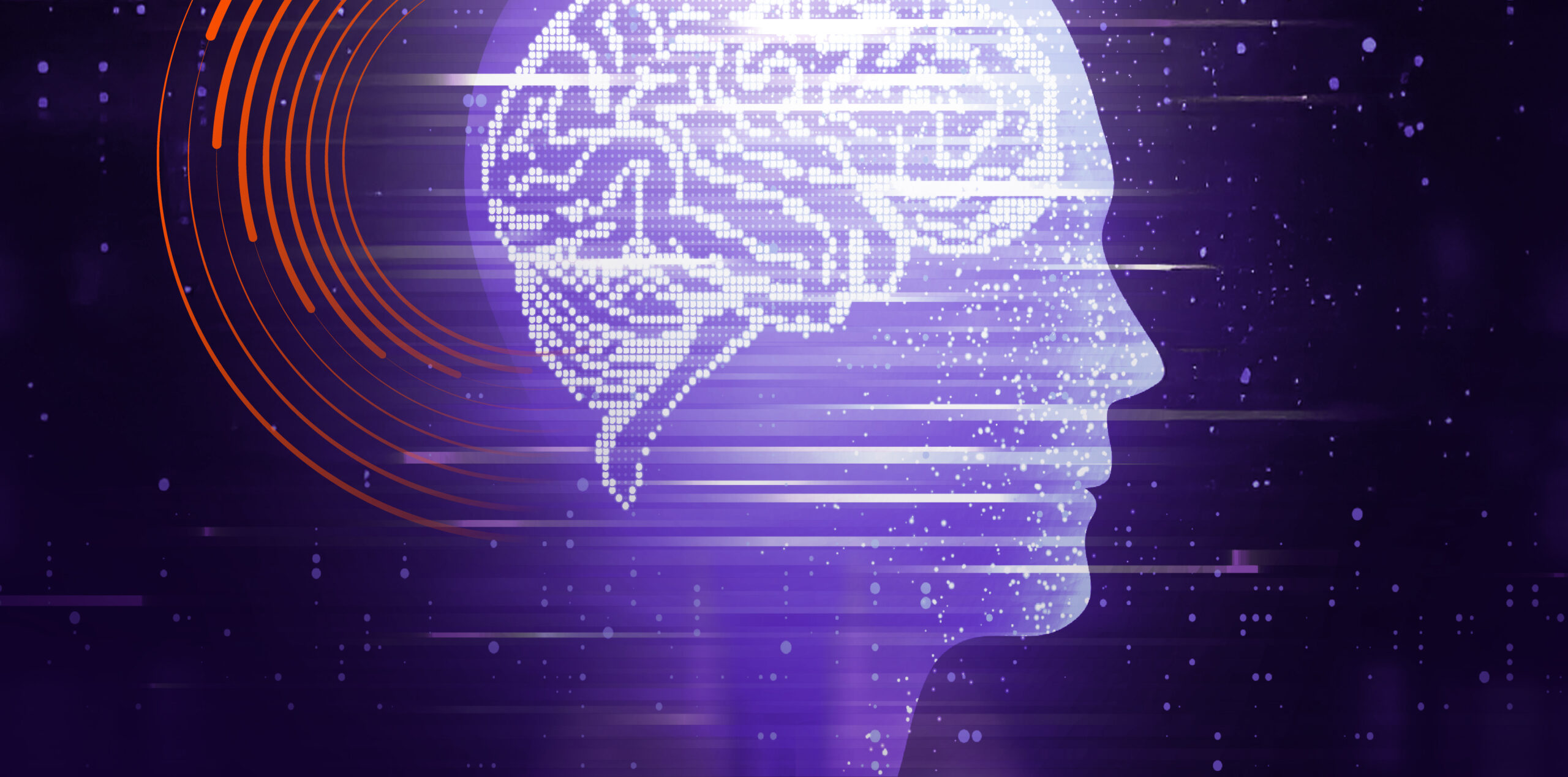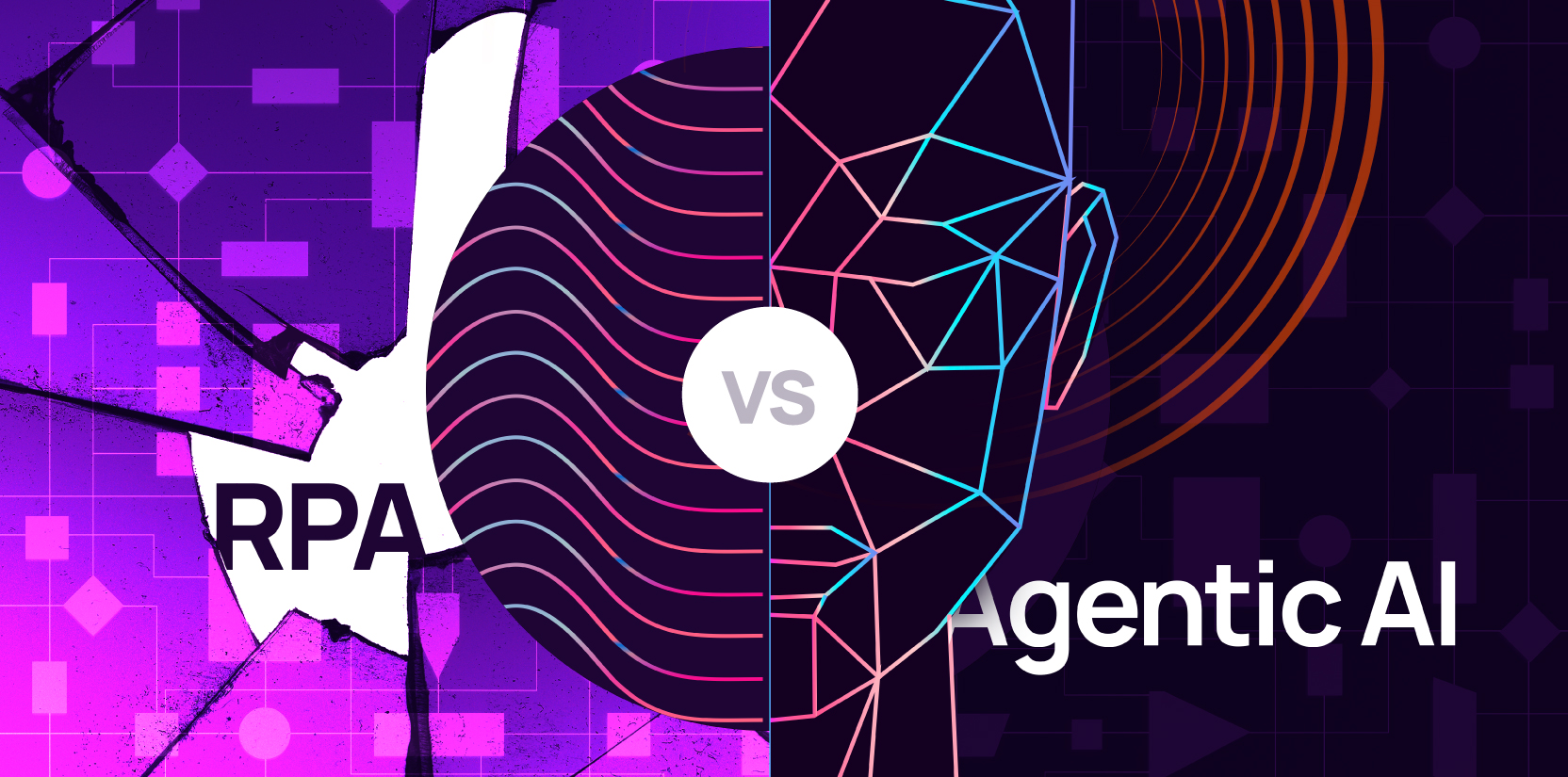For years, the gold standard of business automation has been Robotic Process Automation (RPA). It has been the digital workhorse, a celebrated technology that frees human workers from the shackles of repetitive, mind-numbing digital tasks. Enterprises learned to build, deploy, and manage fleets of these “bots” to boost efficiency, cut costs, and reduce errors.
But the conversation is changing. A new, more powerful concept is capturing the imagination of strategists and technologists alike: Agentic AI.
This is not just “RPA with more AI” or a simple rebranding. It represents a fundamental shift in what is automated and how it is done. It is the difference between automating a process and automating a problem.
For organizations built on RPA, the question arises: Is Agentic AI a replacement? An evolution? Or something else entirely?
This comprehensive guide breaks down both technologies, draws a clear line between their capabilities, and shows why the future is not about replacement but about a powerful new collaboration.
What is Robotic Process Automation (RPA)? The Digital Workhorse
At its core, Robotic Process Automation (RPA) is a software technology that uses digital “bots” to mimic human actions and interact with digital systems at the user interface (UI) level.
Think of it as the ultimate macro. An RPA bot is designed to follow a precise, pre-programmed script to execute a business process exactly as a human would, only faster and without errors.
The Core Principle of RPA: Following the Script
The guiding philosophy of RPA is deterministic and rule-based. An RPA bot is given a recipe, not a goal. It is a master of execution, not interpretation.
An Analogy: The Player Piano
An RPA bot is like a vintage player piano. It can play an incredibly complex, fast, and beautiful piece of music perfectly every single time. But it can only play the song that is punched into the paper roll. It cannot improvise, it cannot take requests, and if a key is stuck, it does not know how to play the note on a different octave. It simply stops or produces an error.
Key Characteristics of RPA
- Rule-Based: Its logic is a strict If-Then-Else statement. “IF cell B2 contains ‘Invoice’, THEN click the ‘Process’ button.”
- Structured Data: It requires predictable, structured data to function. It needs its digital “forms” and “spreadsheets” to be in the exact same format every time.
- UI-Dependent: It works on the “glass,” interacting with buttons, fields, and menus on the screen. This is a strength (it can work with legacy systems that have no APIs) but also a weakness (if a button’s location changes, the bot breaks).
- Task-Oriented: It is designed to automate discrete, repetitive tasks, not end-to-end processes that require judgment.
- Brittle: Any deviation from the expected script or UI, such as a pop-up window, a new field, or a slow-loading page, can cause the bot to fail and require human intervention.
Where RPA Shines: Real-World Use Cases
RPA delivers its massive ROI in high-volume, stable environments:
- Finance & Accounting: Automating invoice processing, data entry from vendor PDFs into an ERP system, and financial reconciliations.
- Human Resources: Onboarding new employees by creating their accounts across multiple, non-integrated systems.
- Customer Service: Copying and pasting customer information from a CRM into a separate ticketing system (a “swivel-chair” task).
- Data Migration: Moving large volumes of data from an old system to a new one by manually re-keying it via the UI.
RPA is the undisputed champion of automating the “how.”
What is Agentic AI? The Autonomous Problem-Solver
Agentic AI, by contrast, is a system that employs one or more autonomous “agents” to perceive their environment, make decisions, reason, and take actions to achieve a specific, high-level goal.
If RPA is given a script, an AI agent is given an objective. It is the difference between “Click A, Copy B, Paste C” and “Monitor the top three competitors and provide a summary of their strategic moves each week.”
The Core Principle of Agentic AI: Achieving the Goal
The guiding philosophy of Agentic AI is cognitive, autonomous, and goal-oriented. It figures out the “how” on its own.
An Analogy: The Human Personal Assistant
An AI Agent is like a skilled human personal assistant. It is not given a step-by-step script. The instruction might be: “Please book a trip to Berlin for the conference next Tuesday. Get a flight that arrives before 3 PM, book a hotel near the conference center under $250/night, and add it all to the calendar.”
The assistant will then independently navigate multiple websites (tools), handle unexpected issues (a sold-out flight), make decisions based on preferences (choosing an airline), and finally present the completed outcome.
The Anatomy of an AI Agent
Agentic AI is not one single technology. It’s a system composed of several key components, often orchestrated by a Large Language Model (LLM) like Google’s Gemini or OpenAI’s GPT-4.
- The Brain (LLM): This is the central reasoning engine. It’s responsible for understanding the user’s goal, breaking it down into smaller, logical steps, and making decisions.
- Memory: Agents have memory. Short-term memory (like a scratchpad) helps them remember the steps they’ve already taken in a single task. Long-term memory allows them to learn from past interactions, recall preferences, and improve over time.
- Tools (The “Hands”): An agent is only as good as its tools. These are the external applications it can call upon to take action in the real world. Tools can include:
- Web browsers (for research)
- Code interpreters (for running calculations)
- Company APIs (for accessing customer data)
- Databases (for pulling reports)
- …and even RPA bots! (more on this later)
4. Planning & Reasoning Loop (e.g., ReAct): This is the agent’s internal monologue. It follows a loop of Reason -> Act -> Observe.
- Reason: “My goal is to find competitor news. I should start by searching Google.”
- Act: [Use Tool: Google Search “Competitor X News”]
- Observe: [Gets 10 results. The first one looks like a press release about a new product.]
- Reason: “This is relevant. I will read this page, summarize it, and then search for news on Competitor Y.”
This ability to self-correct, plan, and use tools makes Agentic AI incredibly powerful and resilient.
Where Agentic AI Thrives: Real-World Use Cases
Agentic AI excels at complex, knowledge-based, and variable processes:
- Complex Customer Service: An agent that can understand a customer’s frustrated email, look up their order history, diagnose the problem, check inventory, and issue a replacement order—all in one autonomous flow.
- Data Analysis & Synthesis: “Monitor our sales data and competitor social media sentiment, and write a weekly report on emerging market trends.”
- Autonomous Marketing: An agent that can be given a budget and a goal (“drive sign-ups for our new webinar”), then autonomously design ad copy, run A/B tests, and re-allocate the budget to the best-performing ads.
- Software Development: AI agents that can take a feature request, write the code, run tests, debug errors, and submit a pull request.
Agentic AI is the champion of automating the “what.”
Agentic AI vs. RPA Vet Clinic Appointment Booking
Agentic AI
(The Executive Chef)
Key Characteristics
- Intelligence: Understands context, intent, and nuance.
- Flexibility: Adapts to new or vague requests.
- Error Handling: Negotiates, offers alternatives, and self-corrects.
- Interaction: Conversational & dynamic (two-way).
Use Cases
RPA
(The Line Cook)
Key Characteristics
- Intelligence: Follows a fixed script. No understanding.
- Flexibility: Fails if the process or input deviates.
- Error Handling: Stops on error. Cannot handle exceptions.
- Interaction: Transactional & rigid (one-way).
Use Cases
- Web Form Data Entry: A client fills out a specific form. The RPA bot copies this data and pastes it into the clinic's booking system.
- Appointment Reminders: The bot runs every morning, reads appointments, and sends identical confirmation emails.
Note: If the exact time slot requested is already taken, the RPA bot will fail since it wasn’t given rules to handle it.
The Critical Differences: Agentic AI vs. RPA at a Glance
While both are forms of automation, they live in different universes. One is about process, the other is about cognition.

Is Agentic AI replacing RPA or enhancing it?
Many organizations wonder whether Agentic AI will make RPA obsolete. The reality is that Agentic AI enhances RPA rather than replaces it. RPA continues to be essential for structured, rule-based, and repetitive tasks. Agentic AI builds on this foundation by adding cognitive reasoning, context awareness, and goal-oriented execution.
When combined, they enable enterprises to move from simple automation to intelligent automation. RPA executes the steps with precision, while Agentic AI decides what needs to be done, manages exceptions, and orchestrates outcomes. Together, they represent the future of enterprise automation built on collaboration, not competition.
How does Agentic AI differ from traditional RPA in intelligent automation?
RPA focuses on automating the “how.” It follows predefined instructions to complete tasks quickly and accurately. Agentic AI focuses on automating the “what.” It interprets goals, reasons through available options, adapts to changing conditions, and chooses the best path to achieve an objective.
RPA depends on structured data and stable workflows, while Agentic AI handles both structured and unstructured data and can learn from experience. In intelligent automation, RPA delivers consistency, and Agentic AI provides adaptability. Together, they enable enterprises to achieve both operational efficiency and strategic insight.
From Competitors to Collaborators: The Hyperautomation Dream Team
This is the most important part: Agentic AI does not make RPA obsolete. It makes it exponentially more valuable.
The true future of enterprise automation, often called “hyperautomation,” is a hybrid model where Agentic AI acts as the “brain” and RPA bots act as the specialized “hands.”
Most valuable processes in enterprises almost certainly involve a mix of modern cloud apps (with APIs) and old, clunky legacy systems (with no APIs). An AI agent cannot interact with the legacy system, but an RPA bot can.
A Powerful Workflow Example: New Client Onboarding
Imagine a complex, unstructured email from a new client hits your inbox.
1. Perception (Agentic AI): The AI Agent reads the email. It understands the human language, tone, and intent. It identifies three separate requests:
- a PO is attached
- the client is asking for login credentials, and
- they’ve mentioned their address in the signature for shipping.
2. Reasoning & Planning (Agentic AI): The agent’s “brain” kicks in. It decides:
- “I need to extract the PO data.”
- “I need to enter the client’s shipping address into our legacy mainframe system.”
- “I need to create a helpdesk ticket to provision their login.”
3. Action & Delegation (AI + RPA): The agent now acts as an orchestrator:
- Task 1 (AI Tool): It uses its internal “document parser” tool to read the attached PO and extract the line items.
- Task 2 (RPA Hand): It calls an RPA bot. It hands the bot two pieces of data: Client_Name and Client_Address. The RPA bot, which was built for this one task, logs into the mainframe, navigates three green-screens, and reliably enters the data. It then reports “Success” back to the agent.
- Task 3 (AI Tool): It uses its API tool to connect to Jira/ServiceNow and create a new, high-priority user ticket.
4. Synthesis (Agentic AI): The agent waits for all three tasks to complete. It then synthesizes the results into a single, helpful, human-like email to the client, confirming their order is being processed, their shipping address is updated, and their login credentials will be sent shortly via a separate email from IT.
In this scenario, RPA’s value is unlocked. It is no longer a brittle, standalone process. It’s now a reliable “tool” in the AI agent’s utility belt, called upon as needed to bridge the gap between the cognitive world and the legacy world.
The Future Runs on Smarter Decisions, Beyond Faster Clicks
RPA provided digital hands to perform repetitive work faster and more accurately than any human could. It automated workflows.
Agentic AI provides a digital brain to automate intelligence itself. It can understand goals, manage ambiguity, and orchestrate a complex suite of tools (including RPA) to solve problems once thought impossible to automate.
For enterprises, the path forward is clear. RPA investments should not be abandoned but supercharged. Processes should be viewed not as a series of clicks to automate but as a series of goals to achieve. By combining the cognitive power of Agentic AI with the reliable execution of RPA, enterprises can build systems that are not just efficient but truly autonomous, resilient, and intelligent.
Begin the shift toward intelligent automation today. Explore how Agentic AI can elevate enterprise efficiency and decision-making.




